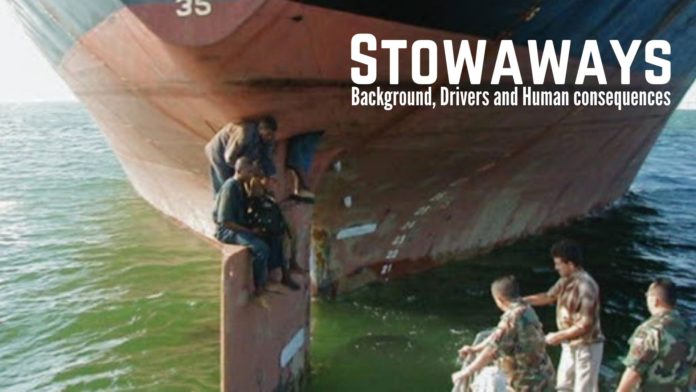
(www.MaritimeCyprus.com) Stowaways have been an expected, though unwanted feature of the maritime environment including within the shipping and fisheries industries since ships have travelled between countries and regions. The presence of stowaways on board
commercial vessels, in particular, causes a plethora of legal, economic, and indeed political issues, the consequences of which come at cost in monetary and reputational terms to an array of interrelated industry stakeholders. These include owners, managers, insurers and the crew themselves. Yet, underlying these impacts lie human accounts behind the stowaways, each with its own set of unique human factors combining to impel the would-be stowaway to embark on such a perilous journey.
This Insight Briefing Note aims to look at the broader issue of stowaways on commercial ships with a particular focus on the ‘push’ and ‘pull’ factors influencing the individuals’ decisions to resort to potential criminal means to achieve their ends.
The underlying causes of stowaway activity are not too dissimilar to those that fuel the seaborne migration pattern in the Mediterranean Sea. Often, stowaways are simply economic migrants. They may be migrating for economic, political, social, or ecological reasons. The means by which they facilitate their migration by circumventing the controls at national frontiers and by unlawfully boarding a vessel automatically criminalises them. However, boarding a ship is arguably safer than resorting to dangerous journeys across North, West and East Africa into Libya whereupon they put to sea in overcrowded rubber dinghies facilitated through criminal trafficking networks. Nevertheless, there is a tendency to look at these people first as criminals and potential threats to the safety and security of the vessel, and second as human beings with a story to tell and fundamental human rights protections.
The Aim of this Insight Briefing Note is to expand the international public awareness of the circumstances behind stowaways making the decision to risk their lives by illegally boarding a vessel for transit to another State and the legal status of those individuals once they become stowaways.
The Objectives are three fold:
1. Understand the drivers which compel individuals to stow away.
2. Understand the international legal instruments which govern and address the issue.
3. Review of applicable case studies for public awareness.
The consequences of stowaway activity are numerous and often complicated by the multi-jurisdictional nature of the shipping industry. The legal processes need to be deconflicted and the fall-out from a business reputational and profitability perspective managed accordingly. Brand protection, reputation protection and associated links to commercial safety standard auditing will play a significant factor into the willingness to profile incidents, as in the case of RightShip and the Panama-flagged MV Top Grace. Yet, aside from the legal and commercial consequences there are human and social consequences to consider too.
Click below to download the paper "Insight Briefing Note - Stowaways: Background, Drivers & Human Consequences".
Source: Human Rights at Sea














